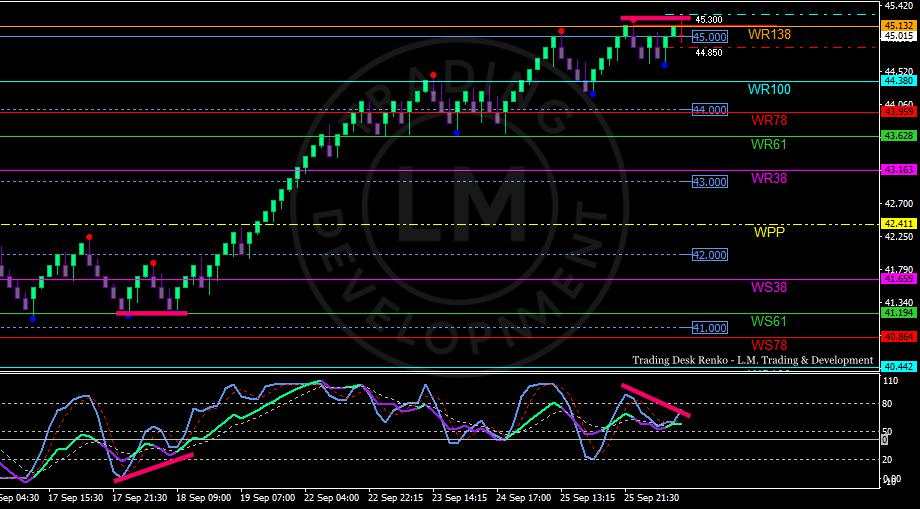Markets entered the final stretch of the week balancing central bank policy signals and key macro data releases. The Swiss National Bank (SNB) kept its policy rate at 0,00% on Thursday, sticking to its ultra-accommodative stance. In the United States, the final reading of Q2 GDP and weekly unemployment claims offered mixed signals on growth and labor markets, while attention now shifts to Friday’s Core PCE inflation report. Meanwhile, Canada prepares to publish GDP data that could determine the short-term direction for USD/CAD.
Against this backdrop, silver is consolidating gains near multi-month highs, oil prices remain steady after recent volatility, and FX markets continue to respond to the evolving policy landscape.
SNB keeps policy at 0,00%: CHF under pressure
The Swiss National Bank’s decision to maintain its policy rate at 0,00% came as no surprise to markets. The central bank highlighted subdued inflationary pressures and the need to sustain accommodative financial conditions in a fragile global environment.
Market reaction was modest but clear: the Swiss franc weakened slightly, with EUR/CHF climbing above 0,95 and USD/CHF holding above 0,90. The message from the SNB is that Switzerland is not in a hurry to tighten policy further, especially given the challenges facing European and global growth.
For traders, the takeaway is straightforward: the SNB remains one of the most dovish central banks in the developed world, and that status leaves the franc vulnerable in relative yield terms. Any upside in CHF pairs will likely depend on risk aversion flows rather than domestic policy.
US GDP and jobless claims: Mixed signals
Thursday’s US data delivered a mixed bag.
-
The final Q2 GDP growth rate came in at 3,3%, below the initial 3,8% estimate but in line with expectations. While still a robust pace, the downward revision reinforces the idea of slowing momentum.
-
Weekly unemployment claims rose to 233k, above both the forecast (218k) and the prior week (232k). This suggests the labor market is gradually softening, a key precondition for the Federal Reserve to continue easing policy.
For markets, the immediate implication is that the Fed’s 25-bp rate cut earlier this week is supported by softer macro data, but not enough to justify a rapid easing cycle. All eyes now turn to Friday’s Core PCE Price Index, the Fed’s preferred inflation gauge. A reading of 0,2% m/m is expected; any upside surprise could unsettle risk sentiment and provide temporary support to the dollar.
Canadian GDP: Oil-linked risks for the Loonie
Friday also brings Canadian GDP data. Markets expect a modest rebound of +0,1% m/m after a -0,1% contraction in the previous release. The data will be critical for the Bank of Canada’s outlook, especially given the high sensitivity of the Canadian dollar to both domestic growth and oil prices.
USD/CAD has been hovering around the 1,35 level, a psychological pivot. A stronger-than-expected GDP print could push the pair lower, especially if WTI crude holds above the 72,00 $ threshold. Conversely, another weak GDP print would undermine the CAD and possibly lift USD/CAD toward 1,36 or higher.
Silver: Consolidating above 42 $
While gold has dominated headlines this week, silver is quietly consolidating near highs not seen in months. Prices advanced toward 43,00 $ per ounce, tracking the broader rally in precious metals but with more volatility.
Technically, silver faces resistance near 45,15 $, with initial support around 44,80–45,00 $. Momentum remains constructive as long as real yields remain under pressure and the dollar struggles to gain traction. The metal continues to benefit from its dual role: a monetary hedge (like gold) and an industrial metal linked to green technologies and electronics.
Traders should monitor whether silver can sustain a breakout above 45,15 $, which could open the door toward 46,00 $. Failure to hold above 44,80 $ would suggest consolidation rather than continuation in the near term.

Silver shows key resistance at 45,15 $ with bearish stochastic divergence, while support is clustered near 44,80–45,00 $.
Oil: Stable but sensitive to macro signals
Oil markets have been calmer this week after recent volatility. WTI crude remains steady above 72,00 $, while Brent trades near 76,00 $.
The stabilization reflects a balance of forces:
-
On the bullish side, supply concerns linked to OPEC+ discipline and geopolitical tensions.
-
On the bearish side, questions about global demand, especially as European and Asian PMIs show signs of slowdown.
For FX traders, the oil story remains particularly important for commodity-linked currencies like CAD and NOK. As mentioned, Canadian GDP will likely amplify any oil-driven moves in USD/CAD.
In technical terms, WTI has support at 71,50 $ and resistance at 73,50 $. A break above the latter could trigger a push toward 75,00 $, while a slip below 71,50 $ would signal fading momentum.
FX market levels to watch
-
EUR/CHF: Testing 0,95 after SNB decision. A sustained break higher would target 0,9550, while support lies at 0,9450.
-
USD/CHF: Holding above 0,90. A dovish Fed plus dovish SNB leaves the pair directionless, with PCE data likely to provide the next catalyst.
-
USD/CAD: 1,35 remains the battleground. Canadian GDP and oil are the decisive drivers.
-
EUR/USD: Lifted toward 1,12 after US data, but resistance at 1,1250 is capping gains. The pair is highly sensitive to Friday’s Core PCE report.
Conclusion: A week that isn’t done yet
The SNB’s dovish stance added another layer to the central bank narrative, reinforcing the Swiss franc’s weakness. US GDP and jobless claims pointed to softer momentum, but not enough to derail confidence in the US economy. Now, Friday’s Core PCE and Canadian GDP data will determine whether the dollar regains traction or continues to wobble into month-end.
For traders, silver and oil are the commodities to watch in this setup. Silver is testing resistance near 45,15 $ and could extend gains if the dollar softens further. Oil’s stability above 72,00 $ is fragile, with macro data and demand signals dictating the next breakout.
In FX, USD/CHF and USD/CAD are the natural barometers of the week’s macro drivers. Until the dust settles from PCE and GDP, volatility should remain elevated — and opportunities for disciplined traders equally abundant.
作者:Luca Mattei,文章来源FXStreet,版权归原作者所有,如有侵权请联系本人删除。
风险提示:本文所述仅代表作者个人观点,不代表 Followme 的官方立场。Followme 不对内容的准确性、完整性或可靠性作出任何保证,对于基于该内容所采取的任何行为,不承担任何责任,除非另有书面明确说明。


加载失败()